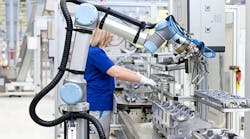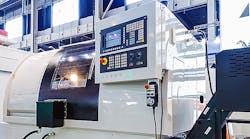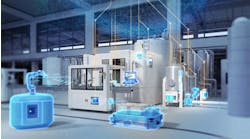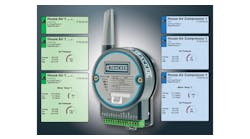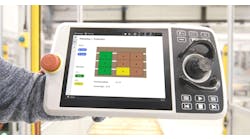The future is a weird and wonderful place. Just 30 years ago, if you were to tell the average person their children and grandchildren were going to be working with robots, they probably would have said you’re crazy. Robots being an integral part of society? Seriously?
You may not yet have any experience with robotic automation, but its becoming a reality quickly for a lot of managers and workers nationwide and around the world. The rise and advancement of robotics technology have accelerated the applications for robots in the workplace, particularly in manufacturing. These units are not androids and do not really look like humans, but it may not be long before you have a robot assistant or co-worker.
What are cobots exactly? They are collaborative robots designed to assist workers on various tasks. The next question then is: How should you treat these “robotic co-workers” when they share your workspace?
More so than any regular employee, managers may have difficulty adapting to a workplace with tasks performed by both humans and robots. You may not realize it now, but robots already are making the move from assembly lines to work cells and shared workstations with human workers. Robots help to build things, deliver and receive materials and orders, and some even wander around the workplace to make sure workers are doing what they're supposed to do.
Treat them with respect — One of the first things managers should realize is that humans, and especially employees working with robots, tend to see these robots as people. While these robots may not have personalities, the workers who have worked with these robots begin to assign a type of character to them. They see them as people and they treat them accordingly.
For example, when these workers were assigned a tedious and repetitive task, they accept the assignment more readily if the command is given by a robot. Typically, a worker would talk to a supervisor if he or she was happy about an assignment, but with robots giving the orders the workers simply continued to do the task.
Advanced cobots — Another thing managers need to be recognize when dealing with cobots is that they’re somewhat more advanced than the typical robot. Cobots have a variety of sensors and cameras that help to convey the impression that they're actually human co-workers. This is important, because these cobots assume more responsibility than the average worker robot that assembles parts or performs pick-and-place assignments.
With cobots in the workforce, workplace safety must be at the forefront of understanding for the human workforce. Safety should be the No. 1 priority anyway, but dealing with cobots becomes an entirely different standard for compliance.
Safety rules —Workers need to understand the precautions and safety procedures for working with any type of machinery, robotic or otherwise. It’s important to recognize that cobots may not have the emotional knowledge to act with precaution as people would in certain circumstances.
It’s also important to understand how the robots and all their parts work together. For example, a robotic arm has a series of main components: the controller, arm, end effector, drive and sensor. The operator must understand how each of these parts functions for his or her own safety and the safety of other workers.
This is doubly important if the robot is mounted on a linear motion system. Linear motion systems add an additional axis of movement for robots, so workers need to have a good grasp of special awareness for the entire moving system to stay safe. Knowing the details of what you’re working with is important when establishing plant safety standards.
While people know to stay safe around machinery, it might be harder to explain this concept to a cobot. The cobot might need programming specific to individual shop floors so it may learn not to get too close to other automated equipment. Also, managers and supervisors should ask how the cobot would react in the face of an emergency. Is there a way for the cobot to prevent emergencies? Can the cobot call for help if something happens to another worker? These are valid questions to investigate.
The future is now, and robots and cobots represent a new aspect of manufacturing comptetitiveness. It may take some time, but you should learn the emerging safety standards and other issues related to programming and operating cobots for processes and plants like yours. Learn how these systems work — even at a basic level — and you'll be put in a much safer position than you would be if you just worked with them blindly.
